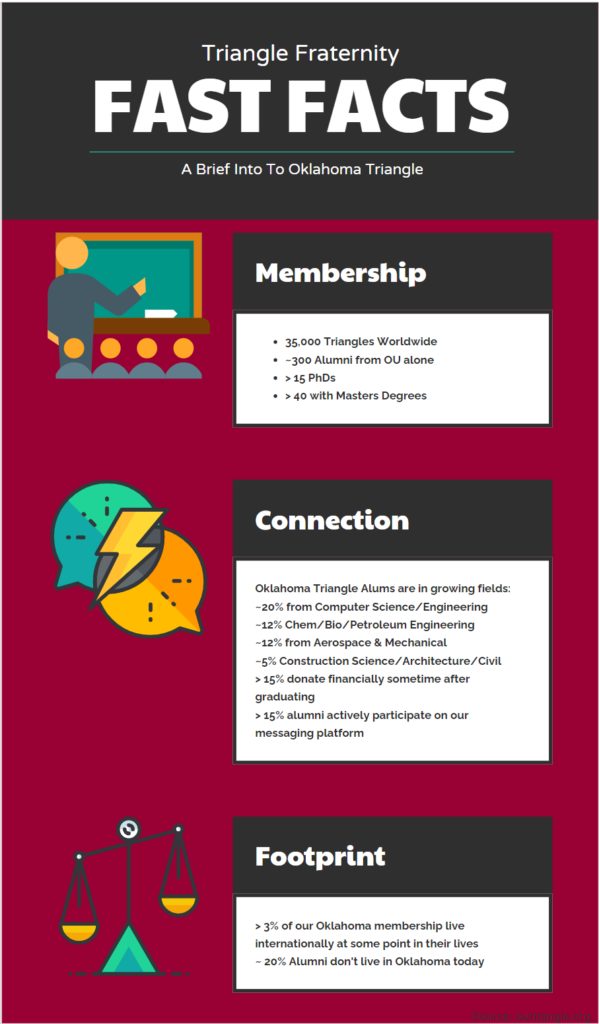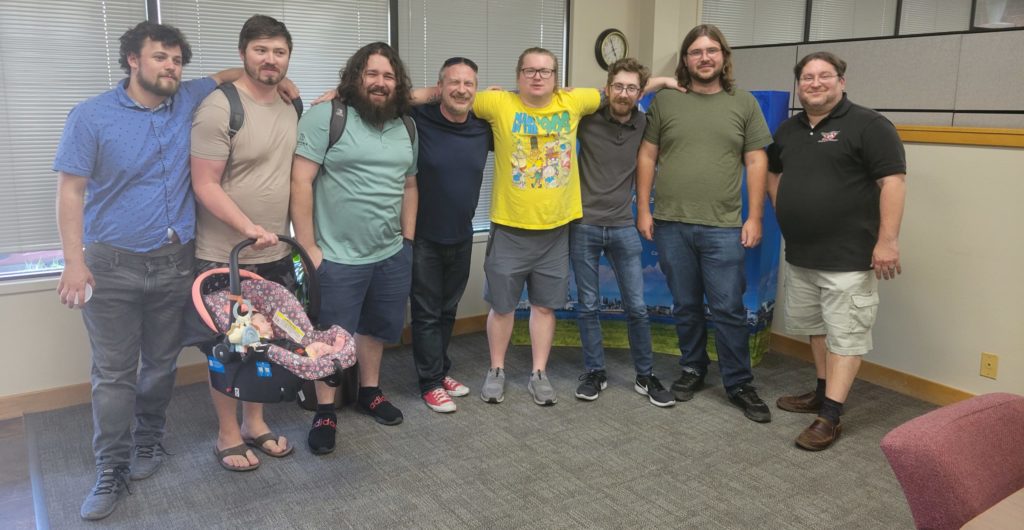Triangle Fraternity started in 1907 originally as a civil engineering only institution, yet slowly broadened its membership to include all of the the STEM fields over the last century. Because membership now includes more diverse educational backgrounds, older chapters in ‘rust belt states’ (such as Illinois or Purdue) tend to have a higher percentage of their members in these more traditional engineering fields. Younger chapters (like Oklahoma) are comprised of more contemporary sciences, like computer science.
While computer science, computer engineering, and electrical engineers make up only a fifth of our total major set, they are a major component of our membership since the chapter came about during the Internet Age. Since computer science wasn’t accepted as a major within Triangle until 1983 (seven years after the Oklahoma colony was founded), it’s easy to see why you can usually find a handful of these guys in any given pledge class.

However, Triangle is hardly just for computer nerds. Because the longest running programs tend to have the strongest membership when examining our forty year history, we’re very well represented within the aerospace, mechanical, construction science, and chemistry/chemical engineering programs. But don’t let this list fool you. Many participants in younger programs like ‘engineering physics’, or the school of mathematics (which tends to cater only to the most hardcore of students) also call Triangle their home.
And of course, this restriction on professional focus means that many of us not only take the same classes, we also have similar career paths.
It is nearly impossible to perform an accurate and consistent inventory of “what level of engineer” each of our alumni are in, but participation in post-secondary private certification programs remains high. We routinely hear alumni are studying for the FE (or PE exams), or advanced multi-year industry certifications. Some eventually branch out into people management, public and military service, or even change into a related field (like patent law). We love our engineer brothers, even if they become lawyers, though a few jokes are expected along the way.
The plurality of our alumni membership work for large Fortune 500 employers at some point in their careers, with a similar number working for the public sector (including several high profile national research labs). A smaller yet significant portion work for budding engineering firms, with the balance occupying roles inside academia and education. This last category only makes sense because the Oklahoma Chapter of Triangle Fraternity ranks highly in advanced degree recipients.
In fact, it is oftentimes challenging to keep up with the exact numbers of advanced degree holders we have because Triangle’s occupy such a dynamic footprint globally. More than 20% of Oklahoma alumni today live out of state (a legacy of Oklahoma’s long-running ‘brain drain’ effect and the US’s tendency to have strong urban growth in a few key tech-centric cities), with a confirmed ~3% of our members living out of country at some point in their lives! This means tracking our more distant alumni who opt in for further education in universities outside Oklahoma is a tricky task! Still, we feel we’re a very close (if geographically widespread) institution, with no less than one in five Oklahoma Triangle Alumni contributing financially to the fraternity’s success at least once in their lives after graduation. Combine this fact with an average pledge size that well exceeds that number, this means that every pledge class statistically includes highly educated men who travel far professionally, and who maintain links to the fraternity for the years and decades to come.

